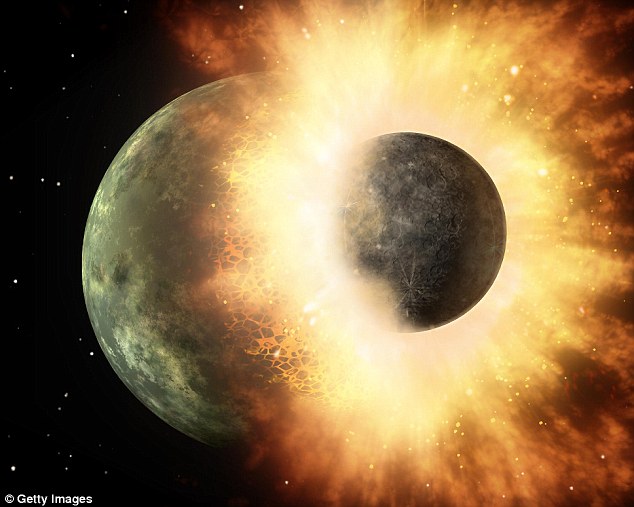Scientists claim to have finally found proof which shows the moon was created during a spectacular collision billions of years ago.
While the Earth is thought to have formed more than 4.5 billion years ago, scientists believe the moon came millions of years later, after an object the size of Mars smashed into the young planet.
Now researchers say a layer of iron and other material deep in the Earth’s interior is proof the moon formed from the remnants.
The giant impact hypothesis suggests that a huge protoplanet called Theia smashed into the Earth within its first few hundred million years of forming.
According to the hypothesis, the collision would have caused a huge amount of debris to be ejected from the core, with Theia fusing and becoming part of the Earth and the moon forming from the debris.
While the impact is the leading hypothesis, hard evidence has been lacking.
Researchers used seismic data of the planetary core and rocky mantle, revealing a layer of iron, silicon, oxygen and other elements hundreds of kilometers thick.
Simulations in the lab revealed that following a collision event, mixing between the object and Earth’s planetary core would have left a footprint in the form of a stratified layer, like that seen close to the core today.
‘We’re saying this stratified layer might be the smoking gun,’ said Professor Peter Olson, an earth and planetary sciences researcher.
‘Its properties are consistent with it being a vestige of that impact,’ he added.
‘Our experiments bring additional evidence in favour of the giant impact hypothesis,’ said Dr Maylis Landeau, lead author of the paper.
‘They demonstrate that the giant impact scenario also explains the stratification inferred by seismology at the top of the present-day Earth’s core. This result ties the present-day structure of Earth’s core to its formation.’
In order to test the hypothesis, the group simulated the mixing with liquids, to recreate the turbulent mixing which would have taken place in the proto-Earth.
Source: Daily mail
N.H.Kh

